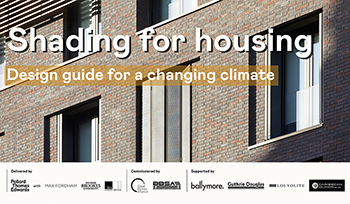Global atmospheric circulation
Contents |
[edit] Introduction
The earth is warmed by the sun to differing degrees, over different areas and in different concentrations. This is because the globe is at an angle to the sun and rotates, meaning certain areas remain closer to the sun over the longer period and therefore remain considerably warmer.
The equator is a relatively thin area but it runs around the globe at its widest point, it also remains closest to the sun as the globe rotates so receives more direct solar energy (or direct insolation) from the sun. On the other hand the suns rays have less opportunity to hit the surface of the Arctic circle, so receive less insolation and thus remain colder.
These variables (as well as others ) impact how air, heat and coolth circulate the globe; global atmospheric circulation. Warm air rises and cold air sinks which can create a simple vertical cell with rotating airflow. As the globe rotates the air at the surface rotates also, so at the equator the air moves faster because it travels further than at the Arctic circle.
So as the warm air at the equator air rises and moves towards the poles it moves faster than the surface of the earth at that point, like wise as air is pulled from the poles down to the equator, it is moving more slowly than the surface as it widens. So air travelling from South to North in effect also moves from West to East and air from the North effectively also moves from East to West, this effect is known as the Coriolis force and forms what is known as the Hadley cell.
These varying effects and the impacts occurring between the extremes create three primary cells that cause atmospheric circulation:
The air rises and sinks as a result of the activity of these cells, and causes a variety high and low pressures at different points on the earths surface:
- Inter-Tropical Convergence Zone (ITCZ) is a low pressure belt is found around the equator.
- Subtropical High at the surface between the Hadley and Ferrel cells.
- Subpolar low at the surface between the polar and Ferrel cell. Air ascends, pressure falls and moist air cools.
- Polar high at the surface below the polar cell. Air ascends, pressure falls and moist air cools.
[edit] Jet streams
Jet streams are narrow variable bands of very strong, predominantly westerly air currents that encircle the globe a few miles above the earth. It is generall accepted that there are typically two or three jet streams in each of the northern and southern hemispheres. The mid latitude jets run between and below the polar and Ferrel cells, whilst the subtropical jets run just below and between the Ferrel and the Hadley cells.
[edit] Related articles on Designing Buildings
- Adaptation.
- Atmosphere.
- Atmospheric pressure.
- Biosphere.
- Climate adaptation.
- Coriolis effect.
- Design Summer Year (DSY)
- Ferrel cell.
- Hadley Cell.
- Hydrosphere.
- Lithosphere.
- Polar cell.
[edit] External links
Featured articles and news
Editor's broadbrush view on forms of electrical heating in context.
The pace of heating change; BSRIA market intelligence
Electric Dreams, Boiler Realities.
New President of ECA announced
Ruth Devine MBE becomes the 112th President of the Electrical Contractors Association.
New CIAT Professional Standards Competency Framework
Supercedes the 2019 Professional Standards Framework from 1 May 2025.
Difficult Sites: Architecture Against the Odds
Free exhibition at the RIBA Architecture Gallery until 31 May.
PPN 021: Payment Spot Checks in Public Sub-Contracts
Published following consultation and influence from ECA.
Designing Buildings reaches 20,000 articles
We take a look back at some of the stranger contributions.
Lessons learned from other industries.
The Buildings of the Malting Industry. Book review.
Conserving places with climate resilience in mind.
Combating burnout.
The 5 elements of seiri, seiton, seiso, seiketsu and shitsuke.
Shading for housing, a design guide
A look back at embedding a new culture of shading.
The Architectural Technology Awards
The AT Awards 2025 are open for entries!
ECA Blueprint for Electrification
The 'mosaic of interconnected challenges' and how to deliver the UK’s Transition to Clean Power.
Grenfell Tower Principal Contractor Award notice
Tower repair and maintenance contractor announced as demolition contractor.






















